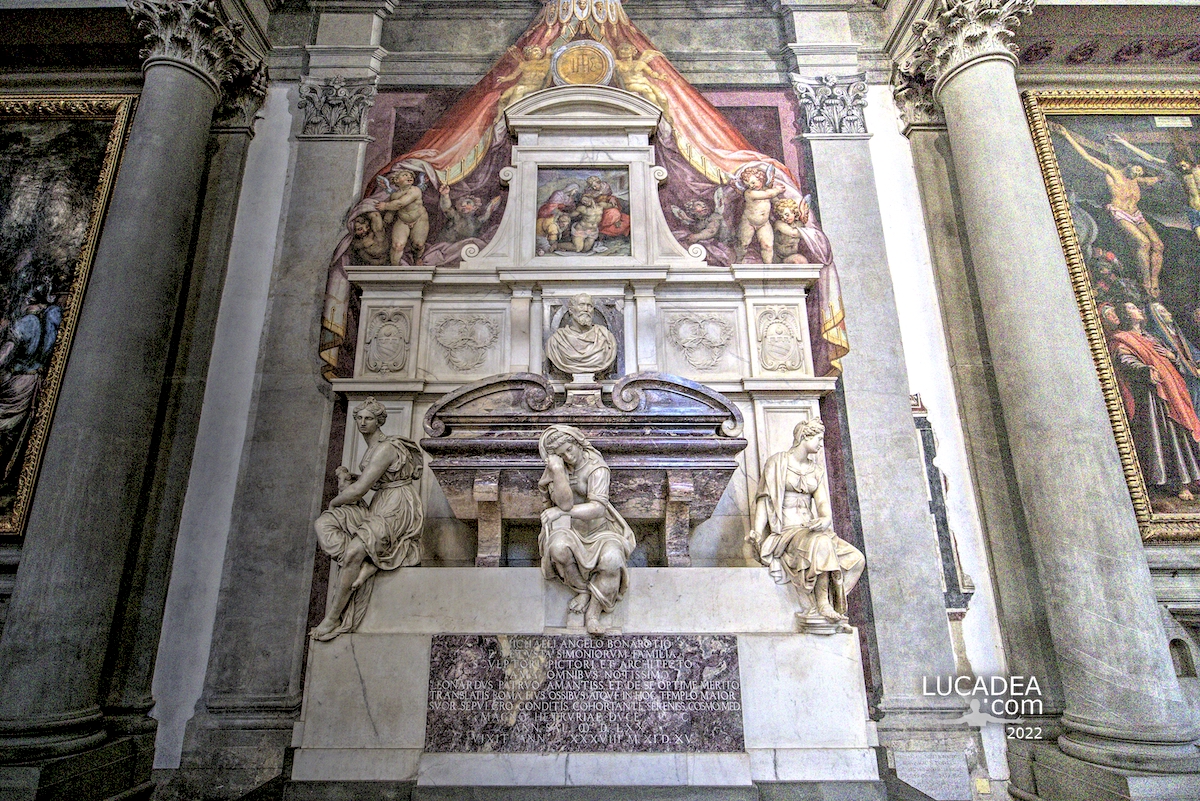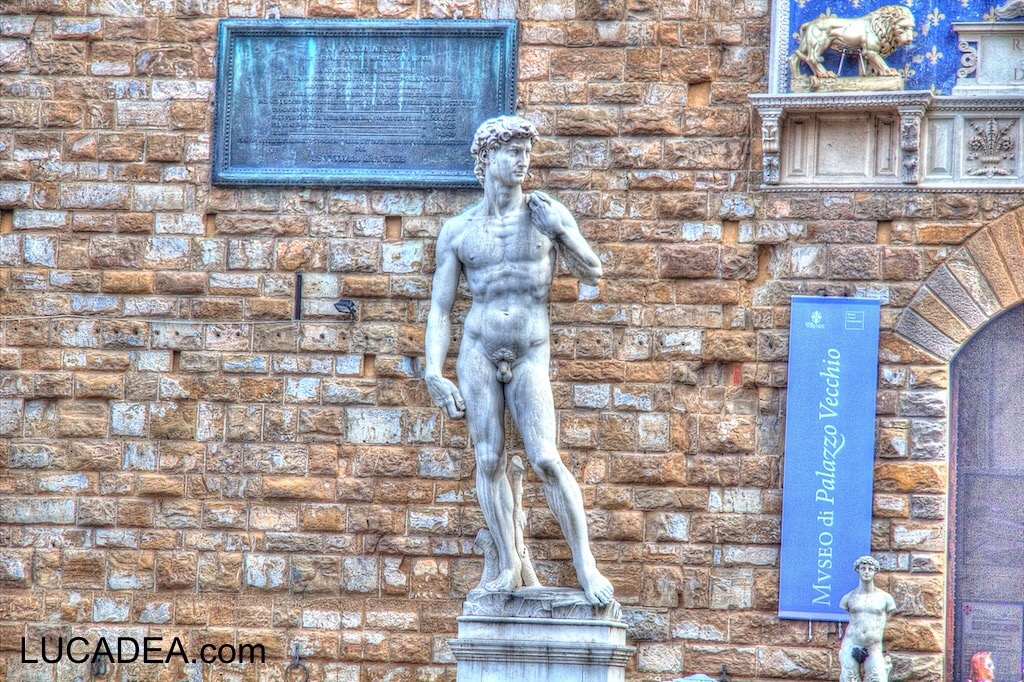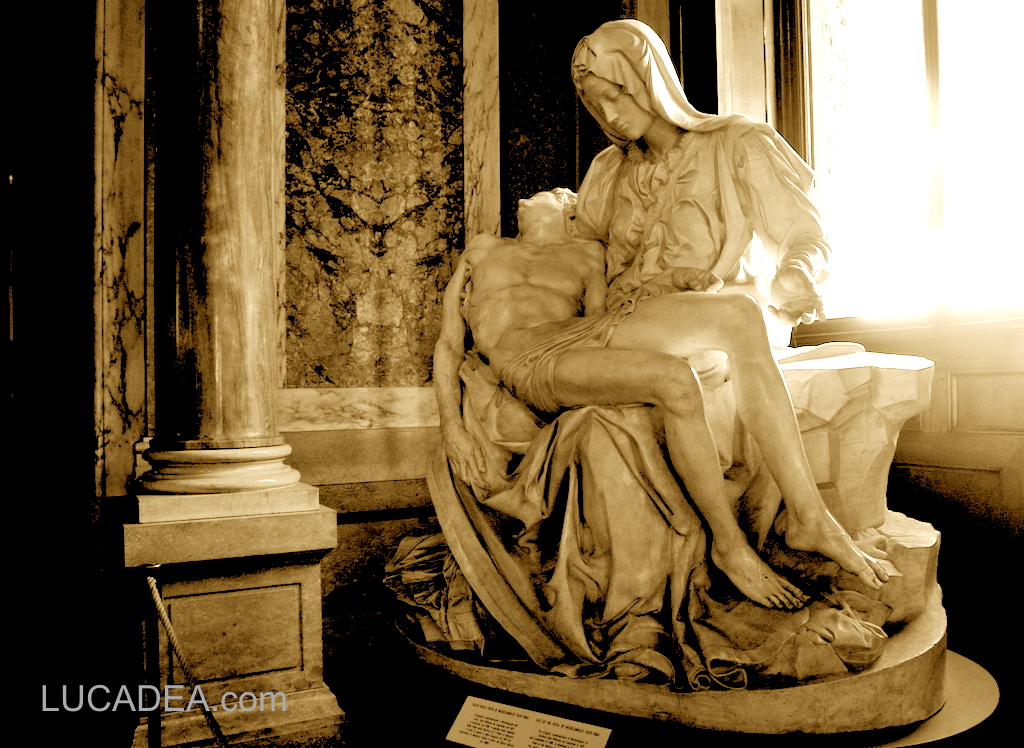Michelangelo's Christ of Minerva in Rome.
In the heart of Rome, in one of the oldest and most evocative neighborhoods of the city, stands the majestic church of Santa Maria sopra Minerva. Inside this sacred building, among works of art of inestimable value, stands out the statue of the Christ of Minerva, a masterpiece sculpted by the famous Renaissance artist Michelangelo Buonarroti.
The statue of the Christ of Minerva, also known as the Risen Christ or Christ of the Pietà, is an imposing marble sculpture depicting Jesus Christ after the resurrection. Commissioned by a young Dominican friar, Fra' Ludovico di Pietro in 1514, the work was designed to adorn the high altar of the church of Santa Maria sopra Minerva. However, the original design included a statue of the Virgin Mary, but was later changed when Michelangelo accepted the commission.
The statue took several years to complete and was completed around 1521. Michelangelo masterfully worked the white marble, creating an extraordinary work that continues to amaze today with its beauty and realism.
The statue of the Christ of Minerva shows Christ in a solemn and calm pose, with his body erect and leaning on the cross. His serene face and intricate anatomical details give the work an extraordinary sense of life and spirituality.
The statue of the Christ of Minerva fits into the artistic and cultural context of the Italian Renaissance, a period of fervent creativity and spiritual renewal. Michelangelo, one of the greatest artists of all time, left an indelible mark on the artistic panorama of the time with works such as David, the Pietà and the Sistine Chapel. His skill in modeling marble and capturing the essence of humanity has influenced generations of subsequent artists.
The statue of Christ of Minerva represents a high point in Michelangelo's career and an icon of the Italian Renaissance. With its timeless beauty and profound spiritual meaning, it continues to inspire and move visitors who venture into the church of Santa Maria sopra Minerva. It is an extraordinary work of art that reminds us of the greatness of human ingenuity and the power of faith.
Do you know the monuments of Rome? Add a comment or go to the bottom of the site to read what other visitors have written.
Photo taken with Canon EOS RP and lens Canon RF 24-50.
Here I leave you the official website of the basilica: santamariasopraminerva.it.
To see all the photos I took in Rome click here:

Here is where the basilica is located:
The Christ of Minerva is a marble statue (h. 205 cm) by Michelangelo Buonarroti, made in 1519-1520 approximately and now preserved in the Basilica of Santa Maria sopra Minerva in Rome. In 1514 Michelangelo, although he was bound by an exclusive contract with the Della Rovere heirs to work on the tomb of Julius II, did not refuse lucrative private commissions, such as the one received from Bernando Cencio, canon of St. Peter's in the Vatican, Mario Scappucci, Pietro Paolo Castellano and Metello Vari for a resurrected Christ, to be placed in the Basilica of Santa Maria sopra Minerva.
Continue and learn more on Wikipedia
Michelangelo’s Christ of Minerva statue in Rome – Statue du Christ de Minerve de Michel-Ange à Rome – Estatua del Cristo de Minerva de Miguel Ángel en Roma – Estátua do Cristo de Minerva de Michelangelo em Roma – Michelangelos Christus-Minerva-Statue in Rom – Tượng Chúa Kitô Minerva của Michelangelo ở Rome – 米开朗基罗在罗马的密涅瓦基督雕像 – ローマにあるミケランジェロのミネルヴァのキリスト像
The text of the post was written with the help of ChatGPT, a language model from OpenAI.






